Choosing the right building materials for your construction projects is integral to the building of sustainable and reliable structures. One of the most popular materials that has long served as the building blocks of different walls and diverse structures is the red bricks. The red bricks are one of the oldest and most used building materials that were popular choices due to their good availability, durability, and, lower costs.
Post your Requirement
However, with the rising demand of the construction industry, the scarcity of skilled labour, and the increasing cost of kiln fuel, red bricks became costlier and thus less feasible. This led to the gradual innovation and the introduction of a new and incredible option for building materials, i.e. concrete blocks. In the beginning, people were quite resistant to the use of non-red concrete bricks but the durability, performance and reduced dead load of the structures made a place in the people’s hearts and the construction industry as well.
What Are Red Bricks?
The red bricks are the traditional clay bricks that have been long used in diverse kinds of construction projects due to their strength, durability, and ensuring the long-term performance of structures. They are made by moulding clay and then burning the moulded structures into huge kilns for significant amounts of time at high temperatures. They offer the ability to withstand diverse temperature profiles and are also resistant to fire.
What Are AAC Blocks?
The AAC blocks or Autoclaved Aerated Concrete blocks refer to the innovative kind of precast building structures that are lightweight, durable, and feature a porous surface. This kind of structure is typically made with a meticulous mixture of lime, cement, water, quartz sand, and aluminium powder, moulding it and then curing it for a pre-defined time. The process is followed by the placement of the structures in a high-pressure steam chamber that results in the creation of strong, lightweight, hard, and thermally insulated AAC blocks.
Read Also: What Are AAC Blocks? Types, Prices, Advantages, And Applications
AAC Blocks vs Red Clay Bricks
The AAC blocks excel at meeting the needs and requirements of construction professionals with their superior features and the premium qualities that add to their performance and durability in the long run. But the decisions of the people depend on their preferences and personal choices, not just the features. Some of the key factors that need to be considered in your decision in the context of AAC blocks vs red bricks include the following:
1. Material Composition
- Red Clay Bricks: The key ingredient in the manufacturing of red bricks is the natural soil, red soil to be exact. Red clay is the primary ore material used in the production of red bricks with defined technical properties compared to other types of available soil. However, the final properties and capabilities vary depending on the burning process of the wet clay moulds. So to ensure the quality and durability of the structures, the mixing process of clay (alumina), sand, Lime, iron oxide, and magnesium should be monitored and the overall manufacturing process needs to be overseen.
- AAC Blocks: The key ingredients used in the manufacturing of the AAC blocks include fly ash, lime, cement, gypsum, and aeration agent that ensures the porous surface and the uniform technical properties of the structures. The changes in the proportional mix of the material can only impact and help to get the desired properties of the structures. The whole manufacturing process of the structures is automated and the potential risks of errors are restricted to the maximum extent possible.
2. Size Of The Structures
- Red Clay Bricks: The red bricks are typically smaller in size as compared to the AAC blocks. Additionally, the laying of the clay moulds of the bricks involves numerous manual techniques that restrict the exact uniformity in the sizes. If you wish to have uniform sizes in a batch, you need to give special attention to the manufacturing and construction. In a general sense, the standard sizes of the red bricks can be defined as follows:
- Standard Modular Size of Red Bricks:
- 190x90x90mm
- 190x90x40mm
- Standard Non-Modular Size:
- 230x110x70
- 230x110x30
- Standard Modular Size of Red Bricks:
- AAC Blocks: The preferred options in the AAC blocks are moulded with the uniformity and technology of superior machines. Therefore the sizes and dimensions of the AAC blocks are often uniform which helps in the construction of a wall or structure with an absolute finish, improving the overall building aesthetic. The sizes of the AAC blocks are typically larger as compared to the red bricks giving the advantage to the clients to optimize the investment with a reduced volume of blocks quoted for the complete construction of the structure. The average size of the AAC blocks can be defined as follows:
- 600mm x 200mm x 50-300 mm
3. Compressive Strength
- Red Clay Bricks: The quality and performance of the building materials is often defined by its compressive strength. The red bricks served as reliable options as they are manufactured with a compressive strength of 2.5 to 3.5 N/mm2. The overall manufacturing process of the red clay bricks influences the compressive strength and as we have explained before, the burning of the clay bricks is inconsistent and thus causes rises and falls in the technical properties of the structures. So if the technical properties ensure higher strength, the durability will be greater.
- AAC Blocks: The AAC blocks are lightweight as compared to the red clay bricks and thus it is often believed that the AAC blocks lack in meeting the expectations of the clients in terms of strength and durability. However, to your surprise, the compressive strength of the AAC blocks is higher as compared to the red clay bricks and is about 3 to 4.5 N/mm2. The strength is often uniform and the grade of the cement and the proportion of the mixture are the only key factors that can influence the level of strength.
4. Thermal Insulation Properties
- Red Clay Bricks: The insulation properties of the red bricks prove to be potential drawbacks of the structures as they often fail to maintain comfortable temperatures indoors with heat outside. The thermal conductivity of the bricks is as high as 6- 1.0 W/mk thus the heat transfer with these structures is significantly more as compared to the AAC blocks.
- AAC Blocks: The structures of AAC blocks have a competitive edge in delivering insulation properties as their thermal conductivity varies between 0.21- 0.42 W/mk. these structures are typically made of fly ash and fly ash has a lower thermal conductivity thereby helping the occupants maintain a comfortable temperature indoors.
5. Sound Insulation And Other Insulation Capabilities
- Red Clay Bricks: The red clay bricks have a dense structure and thus they are often equipped with good soundproofing or sound insulation capabilities. In a general sense, a wall of thickness of 150 mm reduces the sound by 45 DB and a wall of 230 mm by 50 DB. However, if we talk about earthquake resistance then, unfortunately, the homes or structures built with red bricks are often not earthquake-resistant. Therefore, irrespective of the masonry pattern and joint mortar, the homes built with red bricks fall in earthquake-prone areas. Moreover, the termite resistance, moisture resistance, and fire resistance properties of the red bricks often fail to impress the clients when compared to the AAC blocks.
- AAC Blocks: The AAC blocks are often celebrated for their acoustic properties. Due to the presence of air voids, the AAC blocks often offer superior transmission properties and thus good soundproofing in the walls. A 200 mm thick wall can reduce the penetration of 40-45 dB of sound. Their lightweight nature and porous surface further contributed to the maintenance of the quiet and calm environment indoors thereby adding to the performance in the long run.
6. Efficiency And Construction Workability
- Red Bricks: Red bricks are comparatively higher in weight and smaller in size, therefore the construction projects optimizing the use of red bricks typically require more labour and also it takes more time to complete a project. The projects including the use of bricks require more mortar due to the irregularity of surfaces & more joints. They also require more water for curing thereby a higher amount of electricity and added labor work. The durability of the structures is also relatively lower as compared to AAC blocks, therefore the overall efficiency gives the AAC blocks an upper hand in the comparison.
- AAC Blocks: The AAC blocks are manufactured with advanced technology and precise proportions of materials, resulting in a product that can withstand the test of time. Additionally, the lightweight nature and the larger sizes of the structures help to accelerate the construction process along with reducing the need for labour. Additionally, the flat and even surface & less number of joints ensure a reduced need for mortar. There is a reduced need for water and electricity as well and thus you can ensure the building of durable structures with higher efficiency and less effort.
7. Environmental Sustainability
- Red Bricks: The manufacturing process of the red bricks incorporates the use of natural clay that depletes the topsoil thereby causing deforestation in the landscape. Additionally, the brick kilns prove to be significant sources of air pollution with the emission of greenhouse gases. Their production also consumes significant energy in their manufacturing thereby reducing their sustainability for the people.
- AAC Blocks: The AAC blocks are manufactured with fly ash which is the byproduct of diverse processes. The AAC blocks benefit from the use of recycled materials and their carbon footprint is also significantly low with the higher thermal insulation and reduced energy consumption in the manufacturing process. Additionally, the long-term performance and durability of the structures make them an eco-friendly alternative that promotes the building of a green and sustainable future.
8. Applications
- Red Bricks: Hard and durable, red bricks are used as a significant construction material for the development of diverse string structures such as residential or commercial buildings, bridges, foundations, arches and cornices, pavements, industrial buildings, and others. The red bricks are available in different colours, sizes, and orientations and thus can be used to get different surface designs in architecture.
- AAC Blocks: The innovative structures of the AAC blocks are effectively used in the construction of internal as well as external walls in different buildings. They can be used for both load-bearing and non-load-bearing internal walls, partition and panel walls, as backing to brick masonry, external load-bearing walls, panel walls in steel or reinforced concrete frame structure, and others.
9. Price Comparison
- Red Bricks: The per unit cost of the red bricks is comparatively lower as compared to that of AAC blocks. However, due to the smaller size of the structures, more units are used thereby adding to the overall investment. Additionally, the construction and maintenance costs of these structures are higher due to the increased use of labour, cement, and mortar and the regular upkeep needs.
- AAC Blocks: The per unit cost of the AAC blocks is comparatively higher but the reduced number of units used impacts the overall investment on the part of the client. Moreover, the construction costs and maintenance costs of the structures due to the faster construction, reduced labour, and less mortar used and the better insulation properties and long-term performance make the materials an incredible investment.
AAC Blocks vs Red Bricks
|
Factors to Consider |
AAC Blocks |
Red Bricks |
|
Weight |
Lightweight (1/3rd the weight of red bricks) |
Heavy |
|
Thermal Insulation |
High |
Low |
|
Sound insulation |
High |
Moderate |
|
Colour |
Grey |
Red |
|
Dry Density |
451 kg/m3 to 1000 kg/m3 |
1600 kg/m3 to 1920 kg/m3 |
|
Strength |
High Compressive Strength |
Relatively low |
|
Costs |
Higher initial cost but cost-effective long-term |
Lower initial cost |
|
Construction Speed |
Faster |
Slower |
|
Wastage |
Minimal |
Higher (Due to breakage) |
|
Sustainability |
Eco-friendly |
Less eco-friendly (high energy consumption) |
|
Fire Resistance |
Excellent |
Good |
|
Water Absorption |
Low |
High |
|
Pest Resistance |
Resistant |
Vulnerable to Pests |
|
Earthquake Resistance |
Sturdy with Earthquake Resistance Capabilities |
Not preferred in earthquake-prone areas |
Top Brands Selling AAC Blocks
We have mentioned below the list of some noteworthy AAC Block Brands:
Why Choose AAC Blocks Over Red Bricks?
Both AAC blocks and red bricks have a role to play in the modern construction industry. However, the AAC blocks serve to be the future of sustainable living and offer a plethora of other benefits as well over red bricks. The final decision is yours, but we advise the clients to consider the quality, durability, performance, thermal insulation, costs, environmental impact, and diverse other factors and make an informed decision to build structures that can stand the test of time with perfection.
Read Also: Types Of Building Materials Used In Construction
FAQ’s
Q-1. Are AAC blocks costlier than red bricks?
A-1. Initially, AAC blocks may seem costlier, but considering reduced labor and mortar costs, they can be more economical.
Q-2. Can AAC blocks be used for all types of construction?
A-2. Yes, AAC blocks are versatile and suitable for various constructions, including residential, commercial, and industrial buildings.
Q-3. Is AAC block good for home?
A-3. Yes, AAC blocks are excellent for homes. They offer durability, energy efficiency, fire resistance, and faster construction. Their lightweight nature makes them easy to handle, contributing to overall construction efficiency.
Q-4. How do you repair a cracked AAC block wall?
A-4. To repair a cracked AAC block wall, use a crack-filling mortar designed for AAC blocks. Apply the mortar to fill cracks and plaster. This specialized solution ensures effective repair and structural integrity.
Q-5. Do AAC blocks require plastering?
A-5. With their wire-cut and plain surface, AAC blocks don’t necessarily require plastering. However, for the external side, plastering might be needed for aesthetic or protective reasons. Design preferences and specific project requirements can influence the decision.

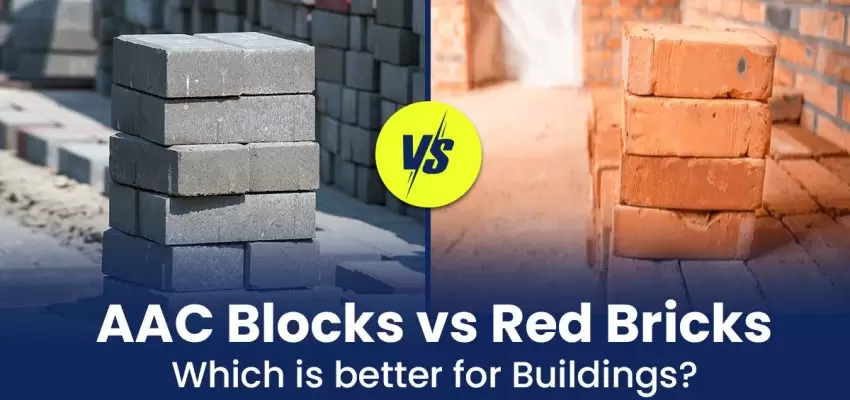
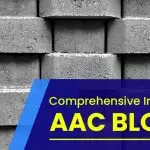
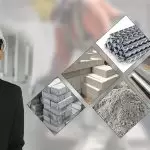
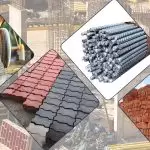
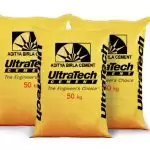

















Post A Comment